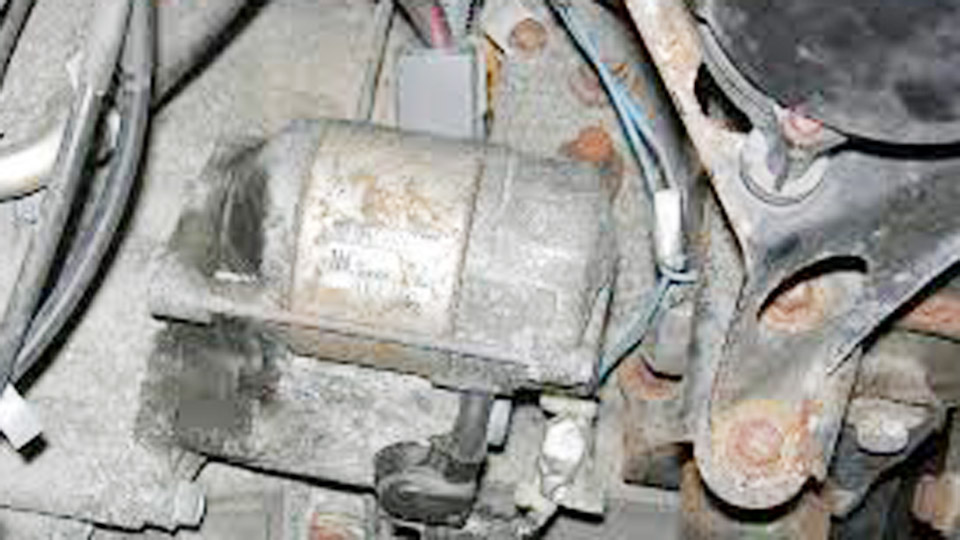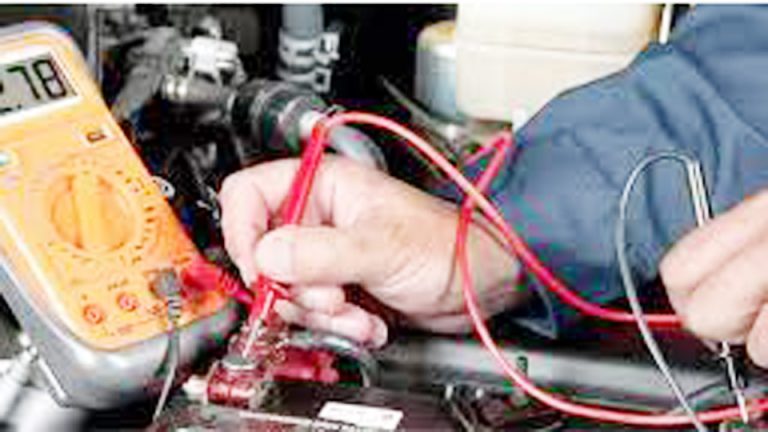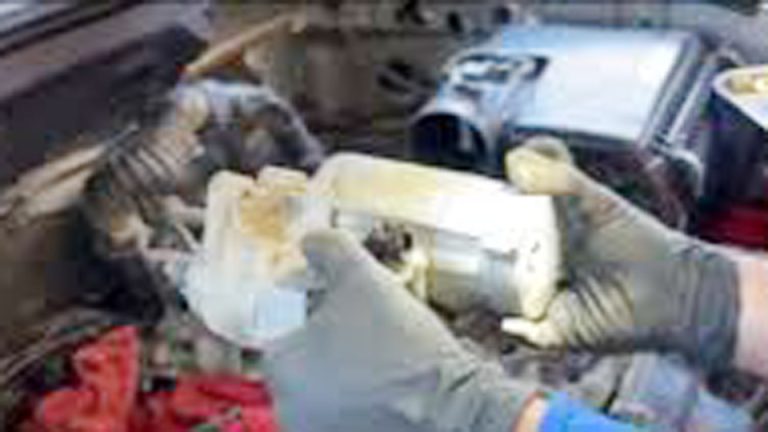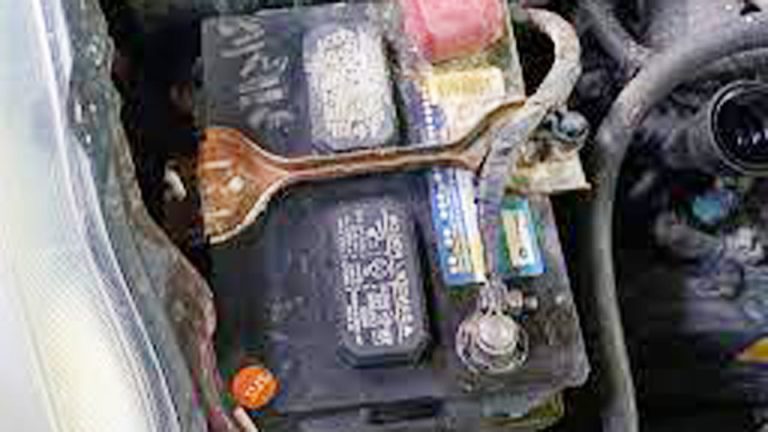I still remember the morning my car refused to start—just a single click when I turned the key. After ruling out the battery, I knew it had to be the starter motor. What followed was a mix of frustration and sticker shock when I started calling around for quotes. Replacing a starter isn’t something most of us plan for, and let me tell you from experience—it’s not always cheap.
Depending on the make and model of your car, where you live, and whether you go with a mechanic or DIY it, the cost to replace a starter motor can vary a lot. I’ve been through the process, weighed the pros and cons of new vs. rebuilt starters, and learned a few tricks to keep the cost down.
I’ll share exactly what I paid, what factors influence the price, and what you should expect—so if your car ever gives you that dreaded click of silence, you’ll be prepared for what comes next.

Image by carfromjapan
What Does a Starter Motor Do?
Before we get to the cost, let’s talk about what a starter motor actually does. You slide into the driver’s seat, turn the key, and your engine roars to life. That’s the starter motor at work. It’s a small but mighty electric motor that uses power from your car’s battery to crank the engine. It spins the crankshaft, which gets the pistons moving and kicks off the combustion process that powers your car.
The starter motor is bolted to the engine or transmission, and it engages with a gear called the flywheel (or flexplate in automatic cars). When you turn the ignition, a solenoid—a kind of magnetic switch—pushes a pinion gear into the flywheel, and the motor spins it to get things going.
Once the engine starts, the starter disengages, and your engine takes over. It’s a quick job—less than five seconds—but without it, your car’s just a fancy paperweight.
I remember the first time I had a starter motor fail on my old Civic. I was late for work, and all I got was a loud click when I turned the key. After a quick check under the hood, I knew the starter was toast. That’s when I learned how critical this little component is.
Why Do Starter Motors Fail?
Starter motors are tough, but they don’t last forever. They’re exposed to heat, vibration, and grime, and they go through thousands of start-stop cycles. Over time, parts like the brushes, bearings, or solenoid wear out. Here’s what I’ve seen cause starter motor failures:
- Wear and Tear: The internal gears and brushes wear down after years of use, especially if you make lots of short trips.
- Electrical Issues: Corroded or loose connections can starve the starter of power, causing it to fail.
- Overheating: If your engine runs hot, it can cook the starter motor over time.
- Poor Maintenance: Dirty battery terminals or a weak battery can put extra strain on the starter.
One time, a buddy of mine ignored a clicking sound for weeks, thinking it was no big deal. By the time he brought his car to me, the starter was completely shot, and he’d also fried part of the wiring. A little attention early on could’ve saved him a bundle.
Factors That Affect Starter Motor Replacement Cost
Now, let’s get to the big question: how much to replace a starter motor in a car? The cost varies widely based on a few key factors. Here’s what I’ve learned from years of working on cars and helping friends with repairs:
Vehicle Make and Model: A starter for a compact sedan like a Honda Civic is usually cheaper than one for a luxury SUV or a high-performance car like a BMW M3. Some vehicles have starters buried deep in the engine bay, which means more labor to access them.
Part Type: You can choose between aftermarket starters ($75–$350), OEM (original equipment manufacturer) starters ($150–$500), or remanufactured starters ($50–$200). OEM parts are pricier but often come with better warranties.
Labor Costs: Labor can range from $100 to $500, depending on where you live and how tough the starter is to reach. In urban areas, expect to pay more—sometimes $100–$300 per hour.
DIY vs. Professional: If you replace the starter yourself, you only pay for the part and maybe a few tools. A shop will charge for both parts and labor.
Additional Repairs: Sometimes, you’ll need to replace related parts, like wiring or the battery, which can add $50–$200 to the bill.
Here’s a quick table to give you a sense of the costs for different vehicles:
| Vehicle Type | Starter Part Cost | Labor Cost | Total Cost (Approx.) |
|---|---|---|---|
| Compact Sedan (e.g., Honda Civic) | $80–$200 | $100–$250 | $400–$600 |
| Mid-Size SUV (e.g., Toyota RAV4) | $100–$300 | $150–$350 | $500–$800 |
| Luxury Vehicle (e.g., BMW 3 Series) | $200–$500 | $200–$500 | $600–$1,200 |
| Truck (e.g., Ford F-150) | $150–$400 | $150–$400 | $500–$1,000 |
When I replaced the starter on my neighbor’s Toyota Corolla, we got an aftermarket part for $120 and I did the labor for free (well, he bought me pizza).
Total cost: under $150. But when my cousin’s BMW needed a new starter, the shop quoted him $900 because the starter was tucked under the intake manifold. Location and car type make a huge difference.
Signs Your Starter Motor Needs Replacing
How do you know it’s time to replace your starter motor? I’ve seen plenty of cars roll into the shop with starter issues, and the signs are usually pretty clear. Here’s what to watch for:
Clicking Sound: You turn the key and hear a single click or rapid clicking. This often means the solenoid is engaging, but the motor isn’t turning.
No Crank, No Start: The engine doesn’t even try to turn over, even if your battery is good.
Slow Cranking: The engine turns over sluggishly, like it’s struggling to wake up.
Grinding Noise: A grinding sound when starting could mean the starter’s gear is damaged or not meshing with the flywheel.
Intermittent Starting: Sometimes the car starts fine; other times, it takes a few tries.
I had a customer once who thought her battery was dead because her car wouldn’t start. I tested the battery—it was fine. The culprit? A worn-out starter motor that was only working half the time. A quick replacement, and she was back on the road.
DIY vs Professional Replacement: What’s the Better Choice?
If you’re handy with tools, you might be tempted to replace the starter motor yourself. I’ve done it plenty of times, and it can save you a chunk of change. But it’s not always a walk in the park. Here’s how to decide:
DIY Replacement
If your car’s starter is easy to access (like in many front-wheel-drive sedans), you can probably handle it with basic tools. Here’s what you’ll need:
- A new starter motor (check your car’s manual for the right part number).
- A socket set, wrenches, and a screwdriver.
- A jack and jack stands to lift the car safely.
- A torque wrench for proper tightening.
The basic steps are:
- Disconnect the battery to avoid shocks.
- Locate the starter (usually near the bottom of the engine).
- Remove the electrical connections and mounting bolts.
- Pull out the old starter and install the new one.
- Reconnect everything and test the car.
I replaced the starter on my old Jeep in about an hour. It was straightforward—two bolts and a couple of wires. Total cost: $100 for the part. But on some cars, like a V8 truck, you might need to remove other parts, like the intake manifold, which can take hours.
Professional Replacement
If the starter is hard to reach or you’re not comfortable under the hood, take it to a mechanic. A professional job ensures it’s done right, and most shops offer a warranty on parts and labor. Expect to pay $100–$500 for labor, depending on the car and shop rates. Dealerships are pricier than independent mechanics, but they often use OEM parts.
When my friend’s Audi needed a new starter, I told her to go to a shop. The starter was buried, and I didn’t want to risk damaging something expensive. She paid $800 but got a two-year warranty, which gave her peace of mind.
How to Save Money on Starter Motor Replacement
Nobody wants to spend more than they have to. Over the years, I’ve picked up a few tricks to keep starter motor replacement costs down:
- Shop Around: Get quotes from multiple mechanics. I’ve seen prices vary by $200 for the same job.
- Consider Remanufactured Parts: These are rebuilt starters that cost less than OEM but are often just as reliable. Just make sure they come with a warranty.
- Check Your Warranty: If your car’s under a factory or extended warranty, the starter might be covered.
- DIY If You’re Confident: If you’ve got the skills and tools, you can save $100–$500 on labor.
- Buy Parts Yourself: Some shops let you bring your own starter, which can cut costs. Just confirm they’re okay with it first.
I helped a coworker save big by ordering a remanufactured starter online for $80 and installing it myself. The shop quoted her $600, so she was thrilled to pocket the savings.
What to Expect During the Replacement Process
Whether you go to a shop or do it yourself, here’s what happens when replacing a starter motor. First, the mechanic (or you) will confirm the starter’s the problem by testing the battery and electrical connections. A good battery and no cranking usually points to the starter.
The replacement itself takes 1–4 hours, depending on the car. Simple jobs, like on a Honda Accord, might take an hour. Tougher ones, like a Toyota Tundra with a V8, can take longer because parts like the intake manifold need to come off. After the new starter’s installed, the mechanic will test the car to make sure it starts smoothly.
I once watched a mechanic replace a starter on a Ford F-150 in under two hours. He had to crawl under the truck, but he made it look easy. The customer was back on the road by lunch.
Common Mistakes to Avoid
I’ve seen plenty of starter motor replacements go wrong, both in my own early days and with others. Here are some mistakes to steer clear of:
Not Disconnecting the Battery: This can lead to shocks or damage to the electrical system. Always disconnect the negative terminal first.
Using the Wrong Starter: Make sure the part matches your car’s specs. A mismatched starter can cause all sorts of problems.
Over-Tightening Bolts: This can strip the threads or crack the starter housing. Use a torque wrench and follow the manual’s specs.
Ignoring Related Issues: A bad battery or corroded cables can mimic starter problems. Check these first to avoid unnecessary repairs.
When I was younger, I installed a starter without double-checking the connections. The car wouldn’t start, and I spent an hour troubleshooting before realizing I’d swapped two wires. Lesson learned—double-check everything.
Practical Tips for Starter Motor Maintenance
Want to avoid a hefty repair bill? Here are some tips to keep your starter motor happy:
Keep Your Battery Strong: A weak battery forces the starter to work harder, shortening its life. Check your battery every couple of years.
Clean Battery Terminals: Corrosion can block power to the starter. A quick scrub with a wire brush can prevent issues.
Avoid Short Trips: Constantly starting and stopping your car wears out the starter faster. Try to combine errands when possible.
Listen for Warning Signs: Don’t ignore clicking or grinding noises. Get them checked before the starter fails completely.
Park on Level Ground: Starting a car on a steep hill puts extra strain on the starter. If you can, park on flat surfaces.
I always tell my friends to treat their starter like their car’s heart—take care of it, and it’ll take care of you. A little maintenance can extend its life by thousands of miles.
Get Back on the Road Without Breaking the Bank
Replacing a starter motor isn’t the most glamorous car repair, but it’s one of the most important. Knowing how much to replace a starter motor in a car—anywhere from $400 to $1,500—helps you budget and make smart choices.
Whether you tackle the job yourself or trust a mechanic, understanding the process and what affects the cost puts you in the driver’s seat. By catching problems early, shopping around for parts, and keeping up with maintenance, you can save money and avoid being stranded.
Read more on starter motor
Frequently Asked Questions
How do I know if my starter motor is bad or if it’s the battery?
If your lights, radio, and dash work but the engine won’t crank, it’s likely the starter. A clicking sound is another clue.
Test the battery with a multimeter to be sure—it should read around 12.6 volts when fully charged. I once thought my starter was bad, but a quick battery test showed it was just dead. A jump-start got me going, and a new battery fixed it.
Can I drive with a bad starter motor?
If your car starts, you can drive, but it’s risky. A failing starter might leave you stranded if you stall or turn off the engine. I had a friend drive with a bad starter for a week, and it died in the middle of a busy intersection. Get it fixed ASAP to avoid trouble.
How long does a starter motor last?
Most starters last 100,000–150,000 miles, but it depends on your car and driving habits. Short trips and harsh conditions can shorten their life. I’ve seen starters last the life of a car, but I’ve also replaced them on high-mileage vehicles after just 80,000 miles.
Is it worth using a remanufactured starter?
Absolutely, if it’s from a reputable brand with a warranty. Remanufactured starters are rebuilt to like-new condition and can save you $100 or more compared to OEM. I’ve used them on several cars with no issues, but always check the warranty.
What if my car still won’t start after replacing the starter?
It could be a bad ignition switch, faulty wiring, or a deeper engine issue. Double-check the starter’s connections and test the battery and alternator.
If you’re stumped, take it to a mechanic. I once replaced a starter only to find a blown fuse was the real problem—always check the simple stuff first.




